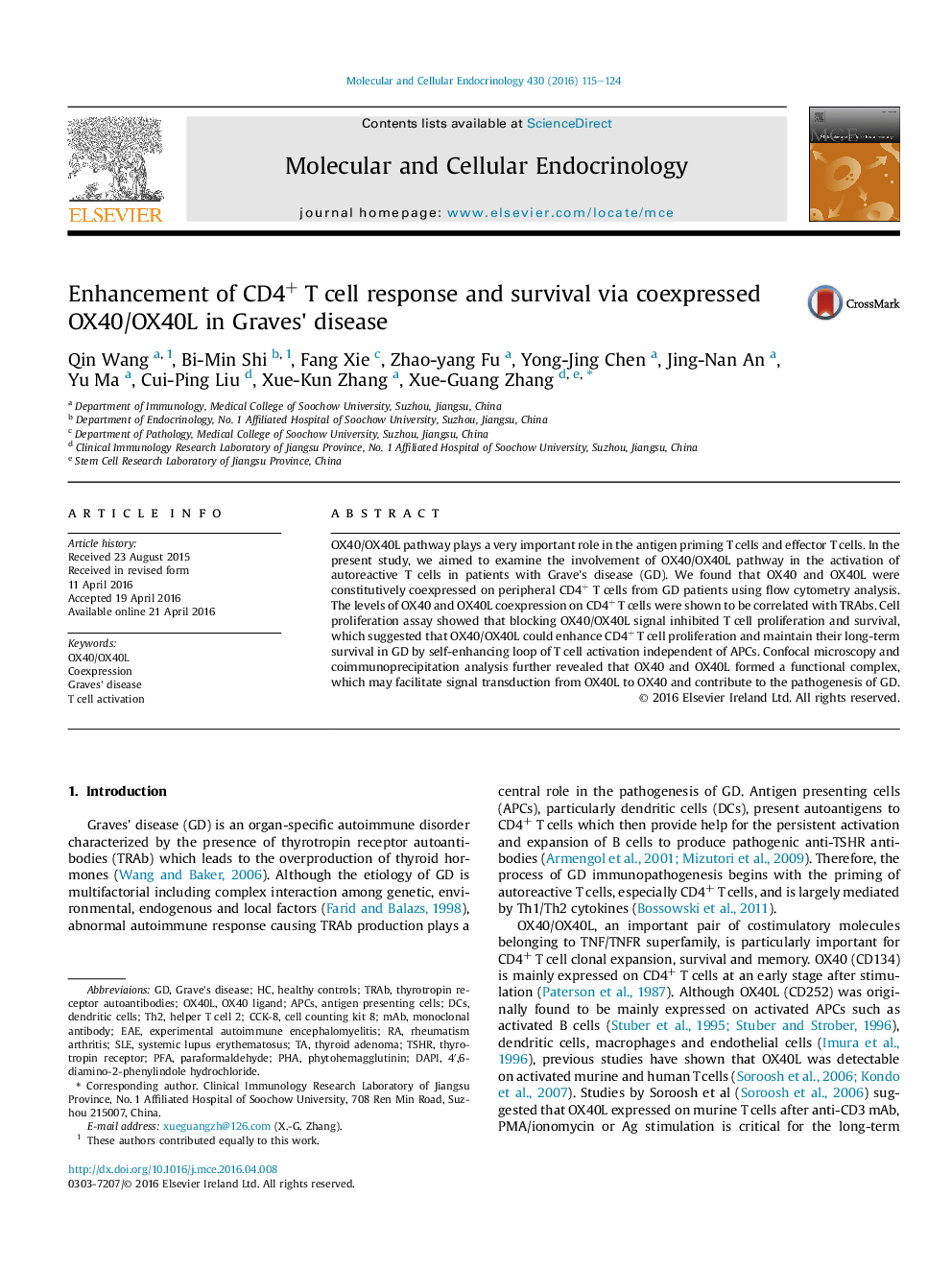| Article ID | Journal | Published Year | Pages | File Type |
|---|---|---|---|---|
| 2195547 | Molecular and Cellular Endocrinology | 2016 | 10 Pages |
•OX40 and OX40L were abnormally and persistently coexpressed on CD4+ T cells of GD patients.•The coexpression levels were closely correlated with TRAb levels.•The coexpressed OX40 and OX40L promoted T cell proliferation and inhibited apoptosis.•OX40 and OX40L coexpressed on CD4+ T cells formed functional complex.
OX40/OX40L pathway plays a very important role in the antigen priming T cells and effector T cells. In the present study, we aimed to examine the involvement of OX40/OX40L pathway in the activation of autoreactive T cells in patients with Grave's disease (GD). We found that OX40 and OX40L were constitutively coexpressed on peripheral CD4+ T cells from GD patients using flow cytometry analysis. The levels of OX40 and OX40L coexpression on CD4+ T cells were shown to be correlated with TRAbs. Cell proliferation assay showed that blocking OX40/OX40L signal inhibited T cell proliferation and survival, which suggested that OX40/OX40L could enhance CD4+ T cell proliferation and maintain their long-term survival in GD by self-enhancing loop of T cell activation independent of APCs. Confocal microscopy and coimmunoprecipitation analysis further revealed that OX40 and OX40L formed a functional complex, which may facilitate signal transduction from OX40L to OX40 and contribute to the pathogenesis of GD.
